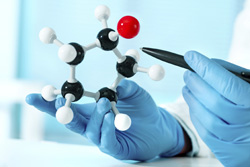Novel techniques for molecular-scale manufacturing
Scanning probe microscopy (SPM) is a scientific technique using a small probe to scan the surface of a sample and provide information not only about topography but about physical, chemical and magnetic properties as well. One of its main limitations is that it can provide information only about conducting and semiconducting materials whereas polymers, ceramics, glass and even biological materials cannot be imaged. Atomic force microscopy (AFM) was developed to overcome this disadvantage. AFM relies on sensing the forces between the very sharp tip of the probe and the sample surface. Depending on the mode, the microscope not only measures the force but controls it via a feedback loop. European researchers supported by funding of the Nanoman project set out to develop new and higher resolution methods for manipulation of structures on the scale of single molecules. In particular, investigators focused on manipulating nanostructures on insulating surfaces for nano-scale manufacture based on AFM. Nanoman team members successfully built and tested a number of new instruments based on AFM to manipulate small and large molecules and nanocrystals. Among the significant contributions were nano-scale manipulation in a vacuum at room temperature, low-temperature molecular manipulation on dielectric surfaces and positioning of single water molecules on an insulating surface. In addition, investigators developed a simulation tool to model interactions between the probe and surface and the effects of feedback control enabling simulation of image production and estimation of forces controlling manipulation. Nanoman project results should foster EU innovation in the rapidly developing field of nanomanufacturing, thus enhancing the EU’s position and resulting in new European nanotechnologies.

